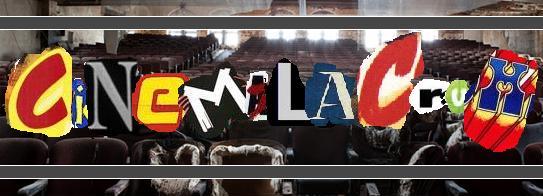Bladerunner will forever be cemented in my memory as the perfect hybrid of science fiction and film noir and I have very little faith that a film will ever be released that could remotely rival Ridley Scott's masterpiece. With that being said, a film occasionally comes along that makes me question my belief, because its artistic rendering and elaborate plot catches me long enough to think it will deliver a pitch perfect movie. However, in ever case to date any movie I have watched thinking it will be the next Bladerunner has always let me down, sadly, this includes my recent viewing of the French animated neo-noir Renaissance. The movie was excellent, watchable and artistically inspiring, yet by the end of the film, I was left feeling as though I had been cheated out of something extra. Perhaps it missed Rutger Hauer holding a dove, or the general badass nature of Harrison Ford, but despite being a visual feast, Renaissance just is not the next Bladerunner. The story line is more appropriate for an anime miniseries and the characters are simply not realized enough to cement it as either a noir or sci-fi masterpiece. However, Renaissance is considerably better than a lot of the garbage that has been released in the past few years and as such, it deserves its fair share of praise.
Given that the film is primarily animated I will not bother noting the actors' names, but it is worth noting that Daniel Craig signed on to provide voices for the English release. Renaissance begins with the kidnapping of a scientist named Ilona, whose name is closely attached with the Big Brotheresque corporation Avalon, which posits an ability to cure the ugly affects of aging. This sudden and inexplicable kidnapping is followed by the introduction of Karas, a rough-edged cop with a dark past who rarely plays by the rules. Karas makes it his sole mission to find Ilona's kidnapper, which includes approaching Avalon's CEO as well as a variety of other members of the Parisian underworld. Unfortunately, these chases and encounters provide him with little success and he eventually approaches Ilona's sister Bislane about the whereabouts of her sister. Realizing the grandiosity of the situation, Bislane agrees to help Karas break into Avalon's security to discover the nature of Ilona's work. With some risk, Bislane discovers that her sister had been working on a project with one Dr. Nakata to discover a cure for aging. Their testing was done in a rather unethical manner using a handful of children who eventually died, which led to a complete destruction of the test results. This discovery leads Karas to reflect on his own past and he begins opening up to Bislane, while at the same time discovering that another individual involved with Avalon named Dr. Muller decided to hide the information about the tests from Avalon given his belief that the corporation would use the actions unethically. It is then discovered Ilona has been placed in confinement with Dr. Muller's brother, who is stuck in the confines of a young child, despite having the appearances of an old man. The young Muller has placed Ilona in a cyberchamber and is controlling her visual experiences, which range from the serene to the terrifying. After doing investigative work, Karas finds the whereabouts of Ilona and Muller's brother and meets them in their hideout. Karas, unfortunately, comes to the realization that the only way to assure that Avalon does not obtain Dr. Nakata's research is to kill Ilona. With regret, Karas kills Ilona and realizes his newfound relationship with Bislane will be forever ruined by his decision. The film then closes on an image of Muller's brother burning a picture of the brothers and he fades into the darkness of the underworld around him.
Renaissance is a very aware movie in its commentary on race relations in Paris, France. While not as gritty, one could call this the animated answer to Mathieu Kassovitz's La Haine, which was also shot in black and white. Like, La Haine, Renaissance, realizes that the divisions of black and white are often problematic as most answers reside somewhere in the grey areas. For Karras his own identity is muddled, as he finds himself performing his actions in a predominantly white world, when his past and own affiliations are inextricably tied to a Arabic underworld, as is evidenced first and foremost by his name and his own leanings toward Islam. Similarly, it is on Karras's squad that we see one of the only black characters in the entire film and the character is a woman as well, a site for bell hooks to behold. Finally, even the characters of Ilona and Bislane are relevant given that they are both blatantly of some Eastern European origins, most likely Russian. Their scientific expertise is the larger factor in their placement in Paris, yet their research as implied by images shown is only assuring the safety of white Parisians, whether it be the Avalon CEO, or the very white face of Avalon billboards. Even the head doctor of the project is not white, yet he is ruined because of the research that had little benefit to him. The film does end with promise as everything merges into one color of darkness and the credits close with images of grey between the blacks and whites, which imply the possibility of a cohesive and beautiful mix of past racial divides.
I plan to keep a copy of this movie in my collection, solely for its place in the evolution of film noir. However, any person interested in the evolution of CGI and technology in film should snag a copy of this film, because it is a visual masterpiece, and while I own a DVD copy, I plan to upgrade to bluray in the near future.






No comments:
Post a Comment